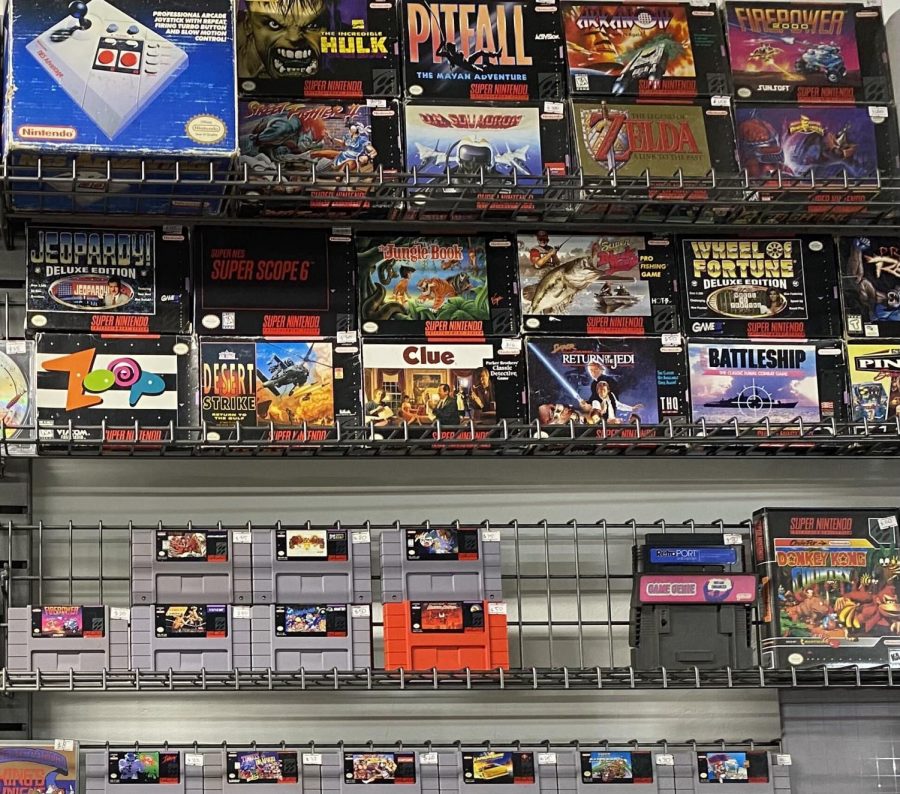20,000 One-Ups: How a Mario Game Sold for $2 Million
Part of a retro video game collection at The Gameshop Downstairs in San Jose.
Retro game collecting has always been an expensive hobby, but the pandemic has witnessed an unprecedented rise in prices. This has caused some games to be sold for incredibly high amounts, from an $870,000 copy of the original Legend of Zelda, to the record breaking $2 million Mario Bros. cartridge, both sold at auctions. These massive costs beg the question of how these numbers are achieved, and what they mean for the industry as a whole.
In explaining how this sort of pricing for collector-grade copies of retro video games was achieved, it is necessary to first establish the cause of this spike in prices, and its effect on the retro market as a whole. According to a study by PriceCharting.com conducted in April of 2021, the average price of retro video games has gone up 33% since March 2020. One of the most extreme examples of this price jump can be seen in the price of Pokemon Emerald, which had its price increase by 145%.
The price jump was most likely spurred by the extended spare time that people had during the pandemic. In an interview with Mr. Raffetto, the business teacher here at Wilcox, he said the following on the matter, “We had a lot more free time on our hands, and a lot of adults missed the games they played. Because of the demand for these games, people are now flipping them, and that’s going to drive the price up too.”
Companies drew on this demand to increase their prices. Retro video games are now sold to collectors as auction items such as Otis and Rally, with the latter being the company which sold the $2 million Mario game. They have also begun to offer shares within the video games which they put up for auction, aware that many people with nostalgic memories of the games will want to invest in them. Much of the profits made off of the games is distributed among the investors, who also make the decision on whether or not to accept offers presented for the games which they hold shares in.
So the way that these astronomical prices came around was due to a mix of the ease with which these sealed, mint condition copies of retro video games can now be bought, and because of the once-in-a-lifetime opportunity presented to the retro video game industry by the pandemic, with more people wanting to play them than ever. But will this demand persist?
When asked, Mr. Raffetto didn’t seem hopeful. “I think what’s gonna happen is, eventually, society is going to go back to working 8 hours a day again, and demand is going to go down. It can’t stay like it is now. Like all collectibles, it goes in waves.”
Nonetheless, COVID-19 rekindled people’s interest in retro video games in unforeseen levels, creating a perfect storm which retro game sellers and auctioning companies have taken full advantage of. Regardless of what future awaits the industry, there’s no doubt that the past year will be remembered as an incredibly unique moment in the history of video game collecting.






